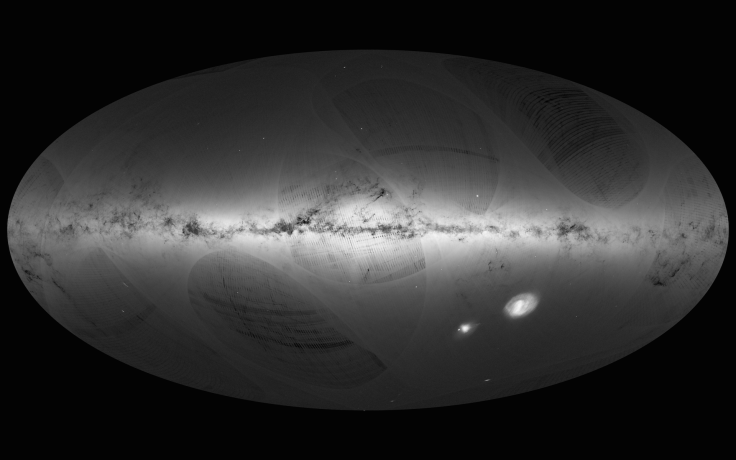3D Map Of Milky Way: European Space Agency’s Gaia Telescope Plots Position, Brightness Of Over 1 Billion Stars

The Milky Way — the galaxy in which we float along as an insignificant speck — is estimated to have roughly 100 billion stars. The observable universe, 93 billion light-years across, is believed to have over 100 billion galaxies — many of which are much bigger than our own.
On Wednesday, the European Space Agency released the first data in its effort to create the most precise and detailed 3D map of our little corner of the universe — one that would, once complete, chart over 1 billion stars in the Milky Way.
The data dump pins down the precise position in the sky and the brightness of 1,142 million stars. In addition, it also features the distances and the motions across the sky for more than 2 million stars.
The map, based on observations made using the 10-meter-wide Gaia space observatory between July 2013 and September 2015, shows the density of stars in our galaxy — with brighter regions indicating denser concentrations of stars, and darker regions showing locations with fewer stars.
Several globular and open clusters of stars sprinkled across the Milky Way’s halo — a superhot cloud of dust that surrounds the galaxy — are seen in the map.
The curved lines and dark bands visible in the image are artefacts that will disappear gradually as more data is collected.
“Gaia is at the forefront of astrometry, charting the sky at precisions that have never been achieved before," Alvaro Giménez, ESA’s director of science, said in a statement. “Today’s release gives us a first impression of the extraordinary data that await us and that will revolutionise our understanding of how stars are distributed and move across our Galaxy.”
In addition to providing a map of unprecedented detail, the data gathered by Gaia would help scientists pinpoint the exact location of the nearest stars by reducing errors in ground-based parallax measurements. In the coming days, months and years, Gaia will make repeated observations to whittle down the errors in parallax angles to just a few micro-arcseconds.
“The beautiful map we are publishing today shows the density of stars measured by Gaia across the entire sky, and confirms that it collected superb data during its first year of operations,” Timo Prusti, Gaia project scientist at ESA, said in the statement.
© Copyright IBTimes 2025. All rights reserved.






















